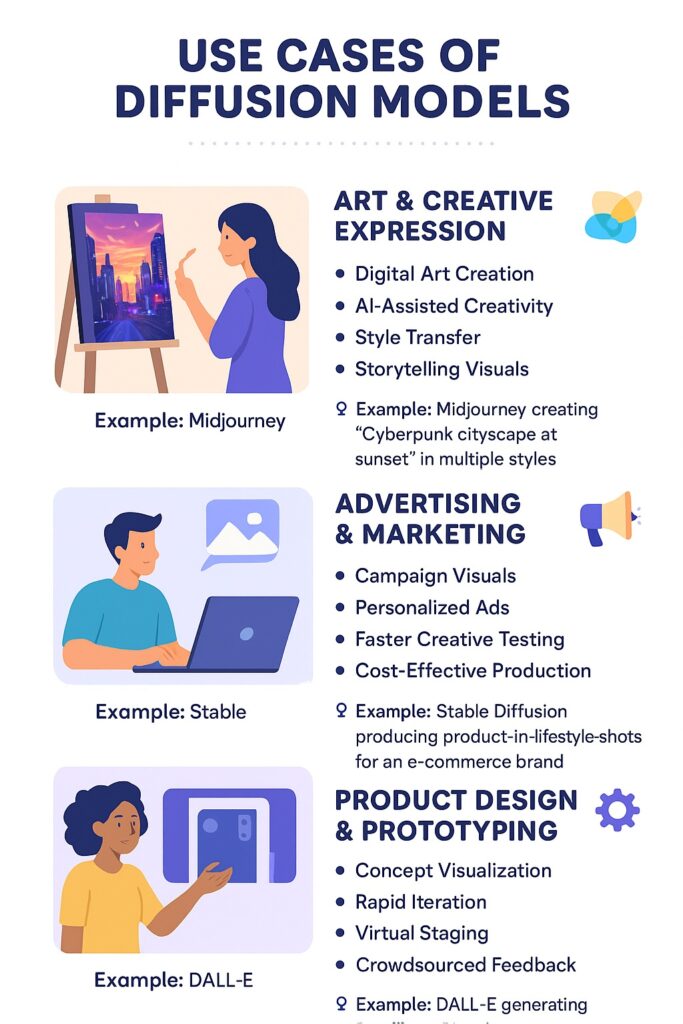(Art • Advertising • Product Design)
1. Art & Creative Expression 🎨
- Digital Art Creation – Artists can generate illustrations, concept art, and fantasy scenes quickly.
- AI-Assisted Creativity – Artists use AI for idea exploration, then refine manually.
- Style Transfer – Apply the style of famous painters (e.g., Van Gogh) to new concepts.
- Storytelling Visuals – Create images to accompany books, comics, or games.
Example: Midjourney creating “Cyberpunk cityscape at sunset” in multiple styles.
2. Advertising & Marketing 📢
- Campaign Visuals – Generate unique images for social media, banners, and video ads.
- Personalized Ads – AI creates different variations targeting different demographics.
- Faster Creative Testing – Produce dozens of ad versions in minutes to test engagement.
- Cost-Effective Production – Reduces need for large-scale photoshoots.
Example: Stable Diffusion producing product-in-lifestyle shots for an e-commerce brand.
3. Product Design & Prototyping 🛠️
- Concept Visualization – Turn text ideas into realistic product mockups before manufacturing.
- Rapid Iteration – Designers can quickly explore multiple color, material, and shape variations.
- Virtual Staging – Show products in different environments without physical prototypes.
- Crowdsourced Feedback – Generate concept images for early feedback from stakeholders.
Example: DALL·E generating futuristic smartphone concepts with different textures.
Why These Use Cases Matter for Students
- High Demand Skills – Creative industries are hiring AI-savvy designers & marketers.
- Portfolio Boost – Students can show AI-generated projects alongside manual designs.
- Entrepreneurship Opportunities – Sell AI-generated artwork, ad creatives, or product mockups.

